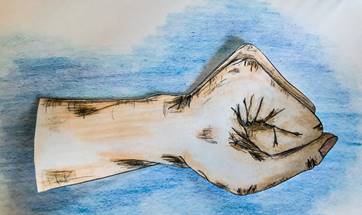A New Clinical Observation Utilizing a Traditional Tendon Transfer to Improve Hand Function in Sunderland III Radial Nerve Injuries
Aaron L Morgan, MD; Lorna Kahn, PT, CHT; Susan Mackinnon, MD
Washington University School of Medicine, Saint Louis, MO
Title: A New Clinical Observation Utilizing a Traditional Tendon Transfer to Improve Hand Function in Sunderland III Injuries that Involve the Radial Nerve
Purpose: To highlight a subtle clinical exam finding in patients with a Sunderland grade III component to radial nerve injuries, where recovered digital extensors attempt to aid weak wrist extensors ultimately leading to dysfunctional grasp. To demonstrate improved functional grasp following a tendon transfer to restore grip kinematics by augmenting isolated wrist extension strength.
Methods: Two patients are described who recovered good digital metacarpophalangeal (MP) joint extensor (Extensor Digitorum Communis, EDC) with poor wrist extensor (Extensor Carpi Radialis Longus/Brevis) strength. The subsequent substitution pattern utilizing EDC (+/- thumb extensors) to stabilize the wrist during functional use had a negative impact on grip strength as simultaneous MP extension precluded MP flexion and thus grasp. Patients underwent a single wrist extension tendon transfer (pronator teres to ECRB) to augment wrist extension strength and reduce the substitution pattern. Outcome metrics include Disabilities of the Arm, Shoulder, and Hand (DASH) scores as well as pinch and grip strength.
Results: Both patients showed much-improved pinch and grip strength following their tendon transfers. The DASH score was only improved in one patient, owing to the complex plexopathy of the second patient.
Conclusions: Pronator teres to ECRB tendon transfer improves grasp in patients with EDC (digital MP extension) substitution patterns for wrist extension. Recovering plexopathies can result in subtle exam findings that require an astute clinical eye, often with the assistance of specially trained hand therapists, to prevent maladaptive substitutions from compromising functional outcomes.

Back to 2018 ePosters
